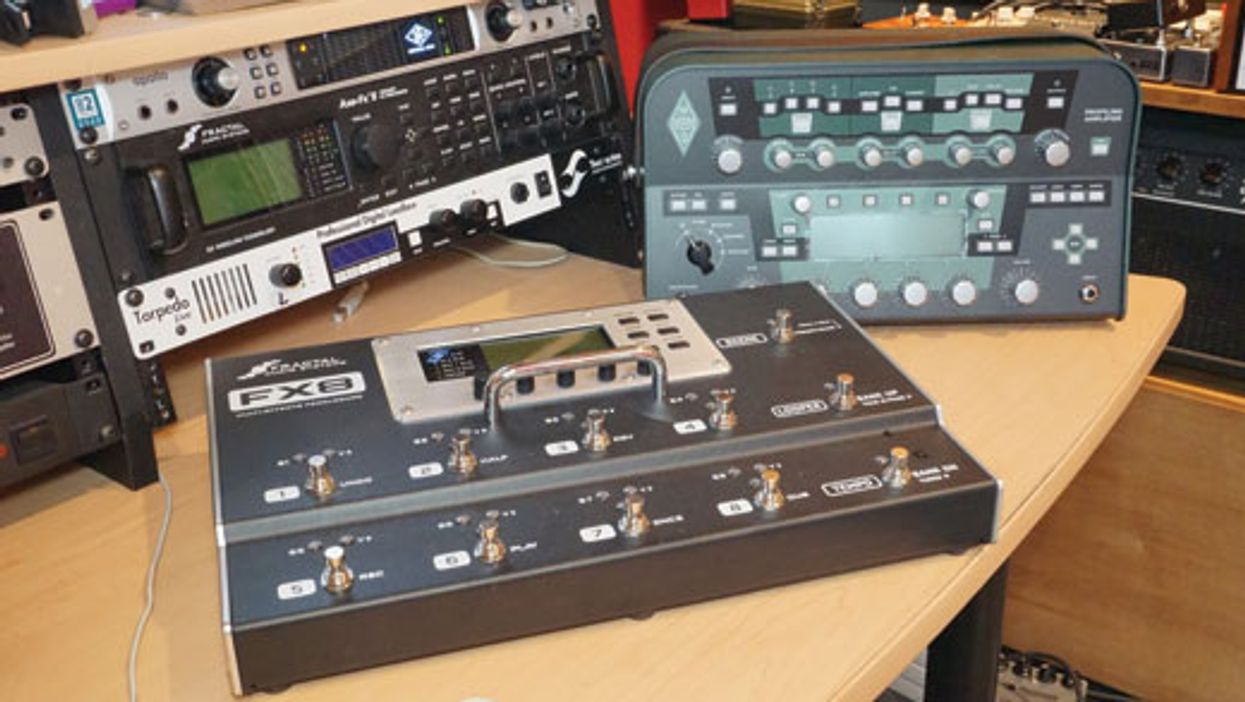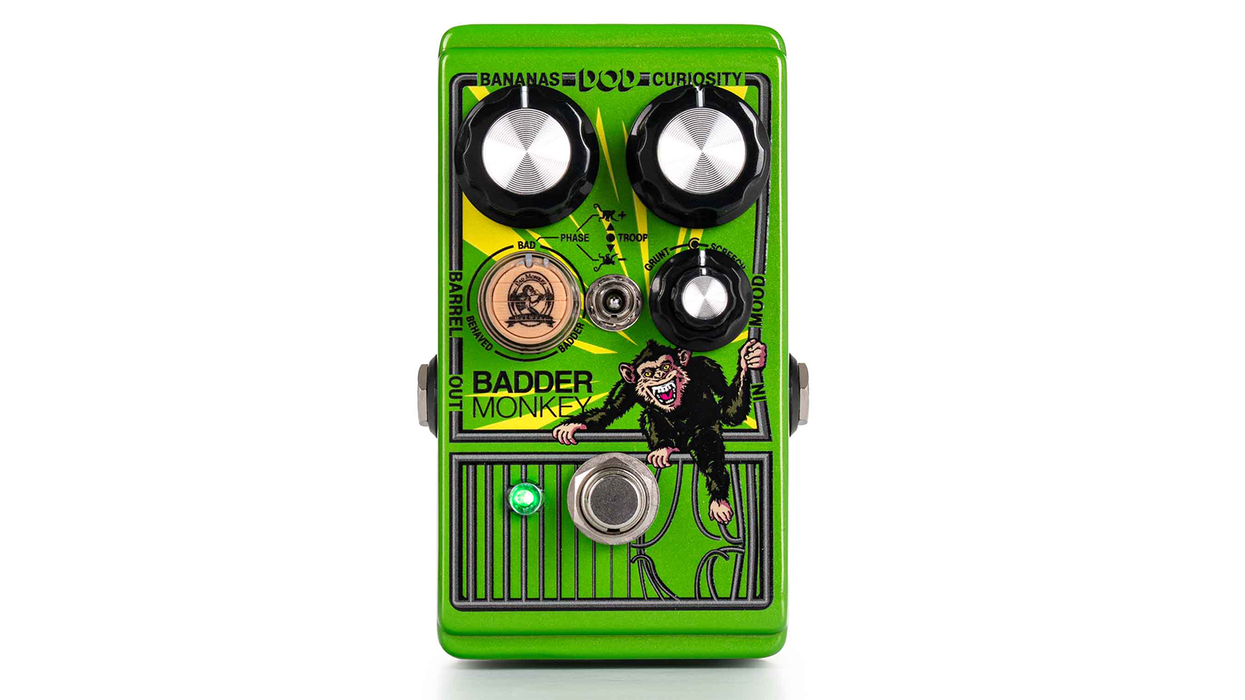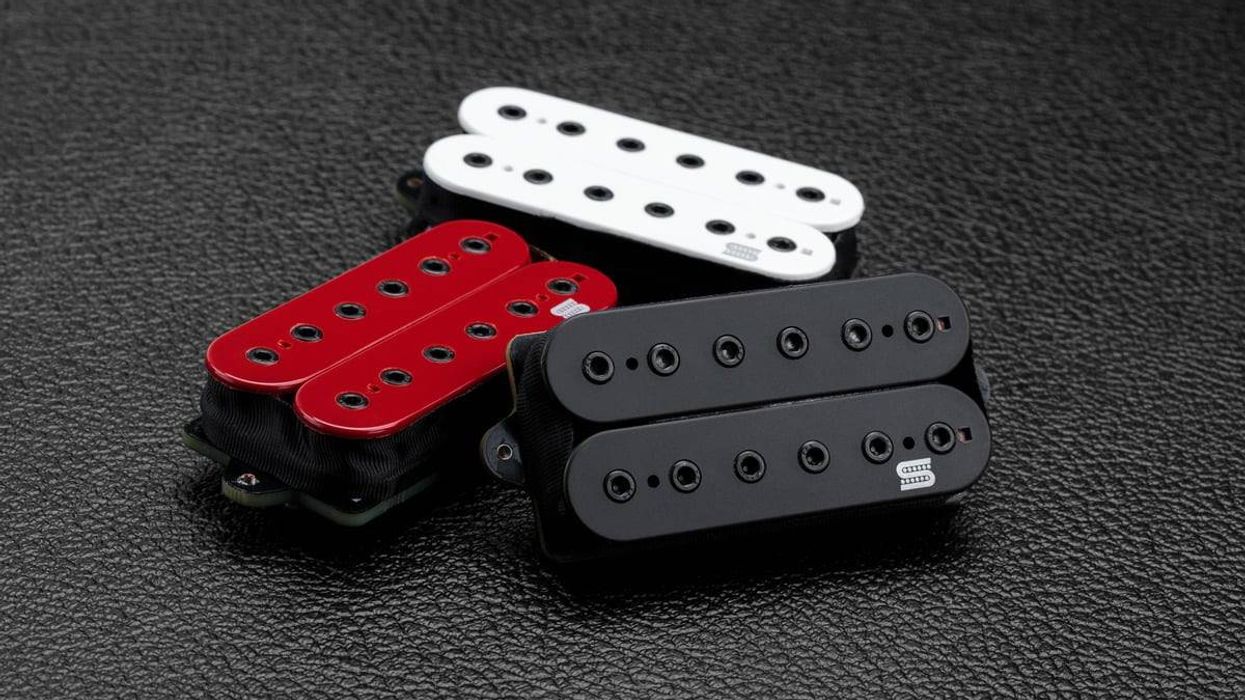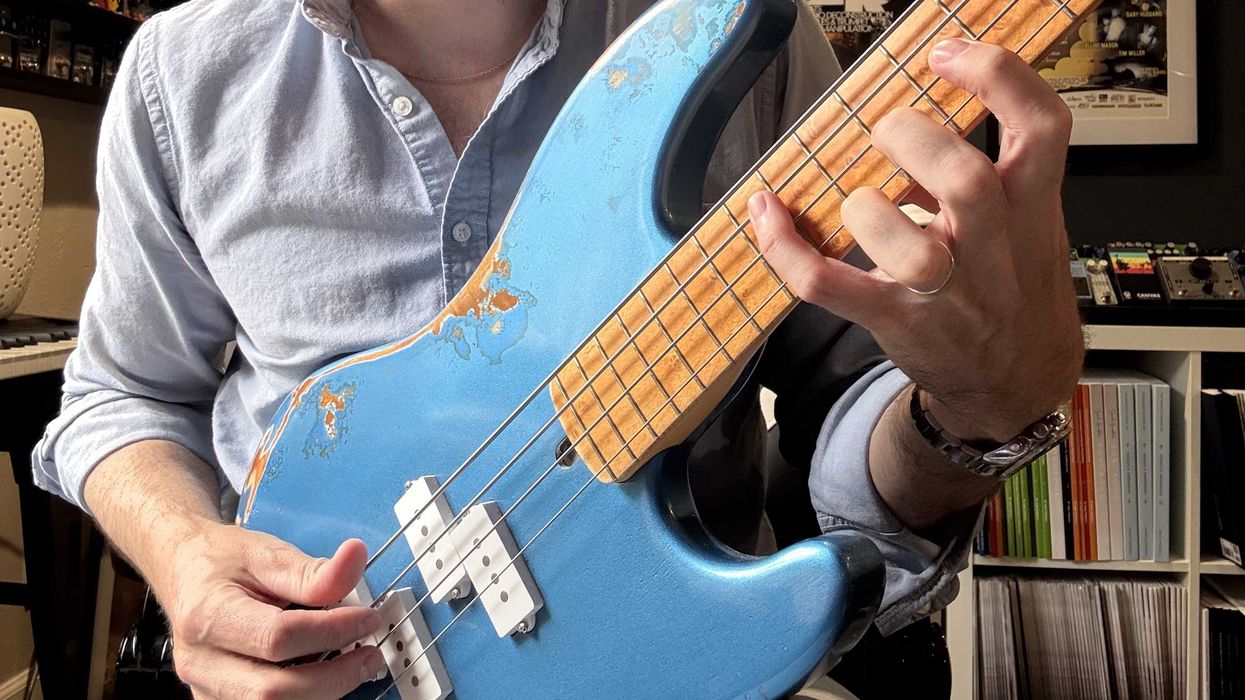When it comes to guitar gear today, there really is something for everyone. We have tube amps that range from 1 watt to 100 watts (and beyond) in every conceivable price and quality range, so many effects pedals that it boggles the mind, and modeling or “profiling" devices that blur the lines between traditional multi-effects processors, amps, and computers. There are a lot of guitarists who have already added or have considered adding a modeling processor to replace some or all of their traditional amp/effects rig components. This month, I'll try to help answer the question you've likely already asked yourself: Is modeling for me?
What's Out There?
The assortment of modeling devices on the market is varied in both features and price. There are rackmount units, such as the Fractal Audio Axe-Fx II and Kemper Profiler PowerRack, stand-alone desktop-style devices like the Boss GT-001, and floorboard units, including the Line 6 Helix and Atomic AmpliFire. Modeling devices have come a long way since the early days, and sound quality today is generally exceptionally high. Tones that are virtually indistinguishable from real amps—especially when blended in a mix—are now the norm. With portability, convenience, flexibility, and programmability on their side, one might wonder why all guitarists haven't switched from traditional rigs to modeling units.
They Aren't for Everyone
I'm often asked, “Should I sell my amp and pedalboard rig and go with a modeler?" It's a difficult question to answer because it depends on a number of factors. One huge factor is that it's just simply cool to play a tube amp! They're loud, they're fun, and they have glowing little bottles in them. Even the folks that make modelers can't deny this since they're making devices that essentially emulate and celebrate the tube amps we all know and love. If you are considering a modeling rig, you should ask yourself the following two questions that go beyond the undeniable “cool" factor of a killer tube amp.
How do you like to listen to your guitar sound?Whether playing gigs or jamming at home, do you generally use an amp placed close to you in traditional fashion, so you can hear the sound from the speaker(s) directly? Or, do you place your cabinet offstage or isolate it somewhere, mike it, and listen through in-ear monitors, headphones, or speaker-style monitors? If it's the latter, transitioning to a modeler can be relatively painless. If you are used to hearing an amp “in the room," going to a modeling rig can be a difficult transition. This is because guitar amps interact with the physical space they are in, and the resulting sound you hear is the sum of the amp, cab, and environment.
Many folks run their modeling gear into full-range, flat-response monitor speakers (aka FRFR rigs) that are placed onstage or close to them in an attempt to recreate the amp-in-the-room feel, but in my opinion, it's a considerably different experience from having a cranked 4x12 behind you and flapping your pant legs.
Are you a plug-and-play guitarist who values simplicity and purity, or one who embraces more complex features? If you're the type of player that prizes simple single- or dual-channel tube amps, and you only use a few effect pedals or none at all, modelers can be quite daunting. Even the simplest modeling units generally have lots of features and menus that you need to scroll through to get to various functions. Yes, modelers' ergonomics and user interfaces have gotten better over the years, but even so, modelers just aren't as simple to operate as traditional rigs. The million-dollar question: Are you ready for a learning curve, or are you happiest when you're just playing and not tweaking gear? Some players relish the process of tweaking tones to perfection and getting deep into programmability. If you lean this way, a modeling rig could be absolutely right for you. But if you can get all the tones you crave out of a simple amp and minimal FX rig, stick with amps and pedals!
A Hybrid Approach
The Fractal Audio FX8 and the Line 6 Helix are two very powerful floorboard-type of boxes that have recently hit the market. The Helix boasts amp and cabinet modeling (fully bypassable) as well as many effects, whereas the FX8 is all about high-quality effects only. Both of these boxes are designed to integrate beautifully with traditional amp-based rigs by allowing guitarists to run effects both in front of their amps and in their effects loop at the same time. They both feature relay switches that are programmable per patch, which permits guitarists to switch amp functions and channels while simultaneously changing effects with the push of a button. This is the kind of total programmability that used to require a refrigerator-sized rack full of gear and a guy named Bob Bradshaw to wire it all together.
These two examples reflect how manufacturers understand that many guitarists don't want to abandon their amp-based rigs. This hybrid-based approach combines the versatility and programmability that modeling offers with the classic, raw power and tone of the venerable tube amp. I predict we'll be seeing more and more players using this approach extensively both onstage and in the studio.
We have so many options in this golden age of guitar gear. That's why it's crucial you identify the type of person and guitarist you are before deciding what equipment to buy. You'll avoid headaches down the road if you ask yourself a few simple questions and determine what's important to you. Until next month, I wish you great tone!
















